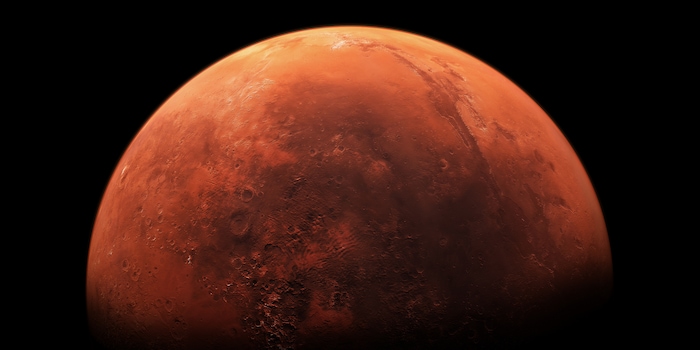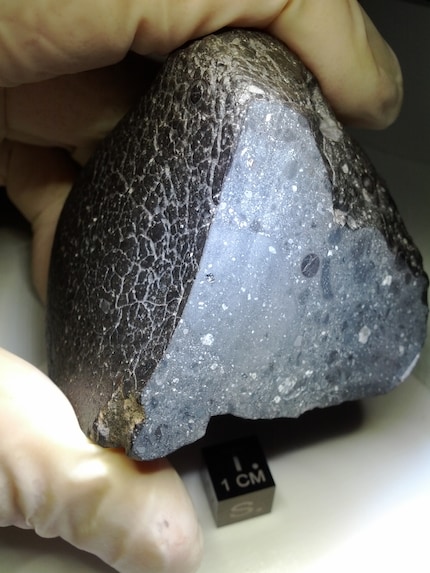
The origin of one of the oldest Martian meteorites
Where exactly "Black Beauty" comes from has been a mystery to experts until now. Now researchers have located the place of origin of one of the earliest Martian rocks, which is about 4.5 billion years old.
The history of the planet Mars can also be studied on Earth: with the help of Martian meteorites. One such meteorite, with the scientific identification NWA 7034, has now been re-examined by a research group and it has been determined exactly where on the Red Planet the rock originated. The volcanic material was hurled away from Mars five to ten million years ago when an asteroid struck. The basaltic breccia itself is about 4.5 billion years old and thus belongs to the oldest known Martian rocks, as a team around Anthony Lagain of Curtin University in Perth explains in the scientific journal "Nature Communications". Future investigations of the region of origin on Mars could therefore reveal more about the origin of the Red Planet.
Based on the chemical signature and the structure of the meteorite, Lagain and his team have determined its possible places of origin. To do this, they programmed an algorithm that evaluates surface images of Mars and identifies smaller craters. In this way, the team found about 90 million craters, some as small as about 50 meters in diameter.

Source: NASA
In the case of NWA 7034, the team determined that an impact about 1.5 billion years ago created Khujirt Crater, which is about 40 kilometers wide, and revealed basaltic breccia. Another impact of an asteroid five to ten million years ago then caused the rock to be hurled into space as a meteorite and subsequently to fall to earth. That structure, which astronomers have named Karratha crater, lies like Khujirt crater in the northeast of the Martian regions of Terra Cimmeria and Terra Sirenum.
This area would be a worthwhile place for further study to find out more about the formation of Mars, according to the study's findings. "We hypothesize that the clasts [rock fragments] contained in the breccia are representative of the origin of the Terra Cimmeria and Terra Sirenum region. This makes this region a relic of early formation processes of the Martian crust and an area of great interest for future missions," the study says.
Martian meteorite NWA 7034 - NWA refers to the Northwest Africa site - was found in the Sahara Desert in 2011. The chunk, also nicknamed Black Beauty because of its black color, weighs about 320 grams. The chemical composition of the meteorite proves that the rock was formed by volcanic processes.
Spectrum of Science
We are partner of Spektrum der Wissenschaft and want to make well-founded information more accessible to you. Follow Spektrum der Wissenschaft if you like the articles.
Originalartikel auf Spektrum.deTitelbild: Shutterstock
Experts from science and research report on the latest findings in their fields – competent, authentic and comprehensible.